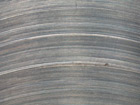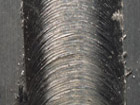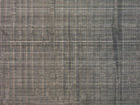- 01: Introduction
- 02: History
- 03: Propellants, Firearms, and Ammunition Development
- 04: Modern Firearms Manufacture
- 05: Small Arms Ammunition
- 06: Evidence Handling Procedures
- 07: Equipment and Instrumentation
- 08: Examination of Firearms
- 09: Cartridge and Shotshell Examination
- 10: Characterization and Evaluation of Fired Projectiles
- 11: Bullet Comparison and Identification
- 12: Gunshot Residue and Distance Determination
- 13: Toolmark Identification
- 14: Communicating Results
- Resources


Milling
Home > Toolmark Identification > Tool Manufacture > Cutting Operations > Milling
Milling involves the use of rotating multitoothed cutters moved into the workpiece, allowing for a wide variety of cutting operations.
The three main categories of milling are as follows:
- Face milling - the surface of the workpiece is parallel to the cutter face located at the end of a spindle or shaft. The cutters are located on the face and edge of the rotating cutter.
- Peripheral milling (slab milling) - the surface being machined is parallel to the (often helical) cutting teeth in the periphery of the tool.
- End milling - fluted cutting edges are arranged on the circumference and end of a rotating shaft that is vertical to the workpiece. The cutting teeth are found on the end of the cutter and the circumference of the cutter body.
Click the images below for a larger image

Click here to watch a video on face milling

Click here to watch a video on end milling
Milling tools may be used in two distinct methods that are defined by how the workpiece is fed into the cutting edges:
- Conventional or up-milling - the workpiece is fed against the rotating cutting teeth.
- Climb or down-milling - the workpiece is fed in the same direction as the rotating cutter, producing a finer finish and an extended tool life.

Click here to watch a video on down milling





 Face mill marks
Face mill marks End mill marks
End mill marks Down mill marks
Down mill marks